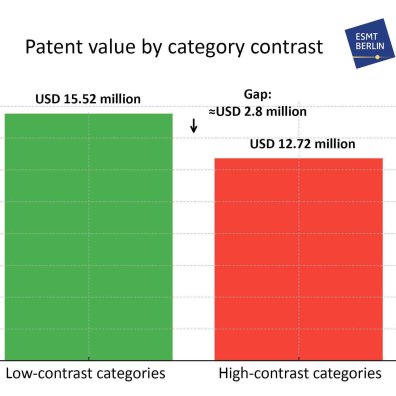ESMT Berlin study: fuzzy categories catalyze groundbreaking inventions

Breakthrough inventions are most likely to emerge when knowledge categories are blurred. Research by Gianluca Carnabuci, professor of organizational behavior at ESMT, and Balázs Kovács, professor at Yale School of Management, shows that patents in low-contrast categories, which have ambiguous or overlapping boundaries, catalyze more disruptive technologies than patents in clearly defined ones. The study draws on an analysis of 3.1 million U.S. patents granted between 1975 and 2013.
The researchers identify two mechanisms that explain why fuzzy categories foster innovation. Through the mechanism of idea creation, blurred categories expose inventors to knowledge from diverse and distant domains, encouraging atypical and original combinations that drive radical advances. And through idea positioning, ambiguous categories allow inventors to frame their patents more broadly, increasing the chances of opening new technological pathways.
“Innovation leaders often assume that sharper distinctions and neatly defined categories will help them innovate more effectively,” says Gianluca Carnabuci. “However, our study shows the opposite: Ambiguity is not a barrier but a catalyst. When ideas are not boxed within neatly defined categories, they are more likely to spur insights that disrupt established thinking and create breakthroughs.”
The findings also demonstrate that patents in low-contrast categories generate more economic and technological value. On average, such patents are worth almost US$ 3 million more than comparable patents in well-defined categories and maintain their influence for longer periods.
For managers and executives, the implications are far-reaching. Rigid product taxonomies or portfolio categorizations may unintentionally bias organizations toward incremental improvements rather than radical innovation. By cultivating a degree of fuzziness in how knowledge is organized and framed, leaders can create conditions in which groundbreaking ideas are more likely to emerge.
The study “Catalyzing Categories: Category Contrast and the Creation of Groundbreaking Inventions” has been published in the peer-reviewed journal Academy of Management.
About ESMT Berlin
Quick links

